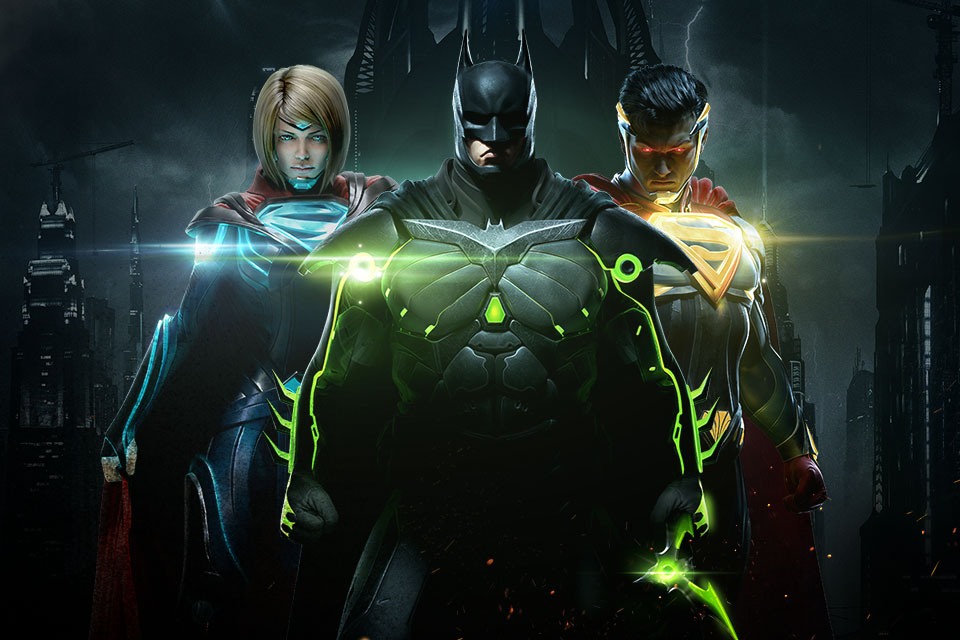The DC Universe is making a steady upward creep into the realm of triple-A gaming, and thanks to 2013’s superb fighting game, Injustice: Gods Among Us, it’s no longer just Batman’s corner of the DCU enjoying that success. Now that Injustice has cemented itself as a beloved triple-A fighting game property alongside Netherrealm Studios’ other main fighter franchise, Mortal Kombat, there was naturally plenty of anticipation surrounding the inevitable sequel. Indeed, Injustice 2 not only has the burden of attempting to improve its already great predecessor’s foundation for the current generation of consoles, but it also carries the burden of making sure that it doesn’t disturb the growing demand for DC-themed video games overall.
Fortunately, Injustice 2 succeeds on every conceivable count, being a great sequel to the original Injustice: Gods Among Us, a standout fighting game on its own merits, and another home run for the DC license in the triple-A gaming space! Packing in further refined fighting mechanics, an exciting new set of features and play modes, and another high-quality DC storyline that unites a sizable batch of DC fans’ favourite heroes and villains, Injustice 2 stands tall even during a Summer season that has been surprisingly packed with fighting game releases across all major platforms.
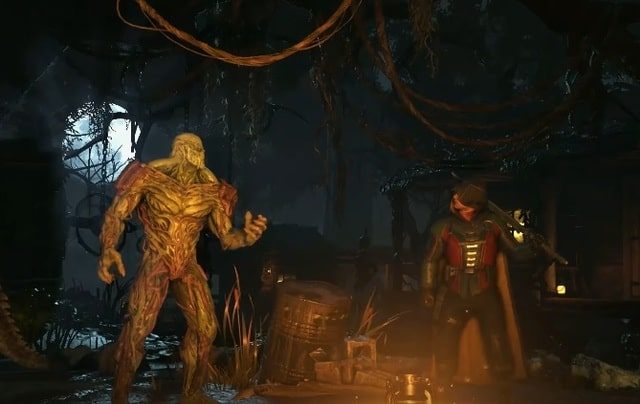
In fact, the only real knock against Injustice 2, a fighting game that does virtually everything right in terms of its design, is the same caveat that was present in Netherrealm Studios’ previous and comparably superb fighting game release, Mortal Kombat X, that being the overly zealous use of microtransactions and additional paid content beyond your initial purchase of the game itself. Granted, Injustice 2 at least avoids sinking quite as low as Mortal Kombat X’s ‘Easy Fatalities’, but the fact remains that its microtransactions and randomized loot system do try to poke at players’ wallets to an uncomfortable degree. If you can put up with that minor nuisance though, Injustice 2 nonetheless remains one of the best fighting games to come out of 2017. Whether you’re a serious fighting gamer, or simply an avid fan of the DC Universe, you should definitely add Injustice 2 to your game collection on your preferred console!
Injustice 2 exceptionally takes advantage of the current-gen PS4 and Xbox One hardware to push the already strong graphics of its predecessor to new and exciting heights! This is a very visually impressive fighter on both consoles, one that offers smooth, flashy battles, a slick-looking user interface, and a perfectly undisturbed 60fps framerate during core gameplay, both online and offline. Injustice 2 does halve the performance down to 30fps during cutscenes and Super Moves on both consoles, mind you, and the Super Move transitions can result in some torn animations that are just a wee bit more evident on Xbox One, but beyond that minor hiccup, this is a truly gorgeous-looking fighter, and one of the best-looking DC-themed video games to date!
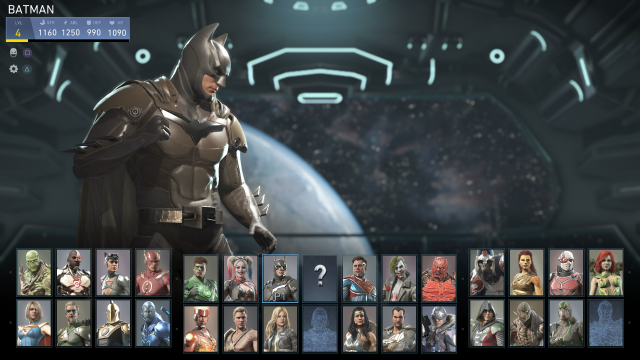
As for potential visual and performance differences between the game’s PS4 and Xbox One builds, there are barely any to speak of, as both builds of Injustice 2 look great and run perfectly smoothly. The only somewhat evident visual difference is the fact that Injustice 2’s Xbox One version renders at a slightly lesser 900p resolution on current Xbox One and Xbox One S consoles (though the upcoming Xbox One X console promises improved resolution for Injustice 2’s Xbox One build), while the PS4 version renders at a full native 1080p resolution on a base PS4 and PS4 Slim console. The PS4 version of Injustice 2 can also be pushed to an ‘Ultra HD’ 1440p resolution when played on a PS4 Pro with a compatible Ultra HD/4K television, but that’s one of the only exclusive advantages for Injustice 2 that’s evidently offered on PS4 Pro hardware. Playing Injustice 2 on a PS4 Pro console does also seem to add a small bit of additional detail to motion effects and background scenery, but frankly, the game’s fights move way too fast for anyone to adequately notice this during gameplay.
Finally, Injustice 2 offers HDR support to further boost lighting and colour effects on any PS4 console, as well as the Xbox One S console, which makes the outstanding visuals even sharper when HDR is enabled on an HDR-compatible television. Bear in mind however that base Xbox One consoles don’t support HDR, so you won’t have that option if you’re restricted to launch model Xbox One hardware. You get virtually flawless performance in Injustice 2 regardless of your console of choice, thankfully, though the presentation is definitely best enjoyed on an HDR-enabled television, especially if you can pair that with a PS4 Pro console that can push the visuals to their maximized 1440p resolution. If your television setup isn’t quite so high-end though, rest assured that Injustice 2 remains a visual treat that runs perfectly on even an older 1080p television, and on even well-used launch model PS4 and Xbox One consoles that have potentially been frequently used in your house since 2013.
Injustice 2 packs in a serviceable orchestral soundtrack, with a mix of reprised themes from the original game and more than a few new ones, though once again, the music is pretty understated compared to the rest of the audio. As with the previous Injustice: Gods Among Us, powerful, earth-shattering sound effects define the audio suite of Injustice 2, especially if you have a capable home theatre speaker system to further crank them up. The awesome might of DC’s heroes and villains continues to carry god-like impact with every thrown punch and beamed projectile, and even without Mortal Kombat’s squeamish violence in the Injustice games, you’ll still feel all of the pain and fury behind these superhuman melees without fail!
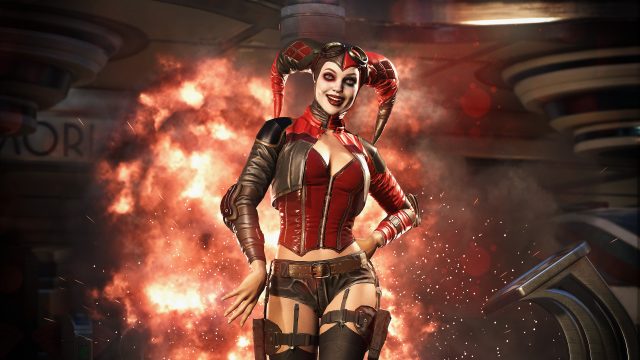
The voice acting in Injustice 2 also remains outstanding, particularly with several veteran DC voice actors reprising their long-running roles, including Kevin Conroy as Batman, George Newbern as Superman, Tara Strong as Harley Quinn, Alan Tudyk as Green Arrow, Grey DeLisle as Catwoman, and Susan Eisenberg as Wonder Woman. The new additions to the fighters’ roster also easily capture a playful and powerful sense of personality, whether it’s the ferocious Cheetah, the sassy Black Canary, or the monstrous Atrocitus. There aren’t any vocal performances that feel false or out-of-place, with every personality throughout Injustice 2 leaping to life from the comic book panels that originally bore them, and sounding exactly as any DC fan would probably imagine.
The original Injustice: Gods Among Us is already a masterfully designed fighting game that’s easy to learn and hard to master, and the same remains true in Injustice 2. Many unique hallmarks of the original Injustice game return for this sequel, including Clashes, environmental attacks, arena transitions and Super Moves, though there have been some tweaks to these unique hooks in Injustice 2. For example, you can now block environmental attacks in certain instances, whereas you couldn’t do so at all in the first game, and you now have a couple of additional options when it comes to expending your Super Meter to reverse or evade an opponent’s attack.
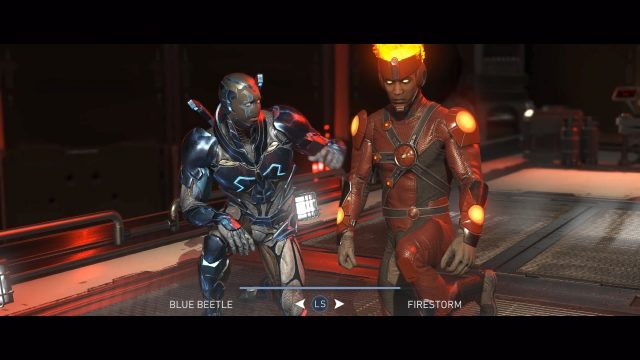
Beyond some of these small refinements however, core combat in Injustice 2 is much the same as the first game, and that’s certainly not a bad thing. Each playable DC hero and villain offers a unique and highly specialized fighting style, emphasizing specific combo inputs and special moves that prioritize anticipating the location of your enemy as much as reacting to their direct attacks. Players can use three of the four face buttons for light, medium or heavy attacks, with the remaining face button triggering a character power that can either enhance your fighter, or give them additional attack capabilities, such as temporarily boosting the strength of Superman, or summoning a circle of bat drones for Batman. As with the previous game, fights are not divided into ’rounds’ that reset both fighters’ health bars when one is KO’d either, instead giving players multiple life bars that must be completely drained to win a match.
Being skilled at Injustice 2, as with its predecessor, involves strategy as much as it does careful reflexes. Managing your Super Meter, which is built up either by taking damage or executing special moves, is crucial, since you can use it to either reverse out of an enemy combo, power up a special move to deal extra damage to your opponent, or, if the Super Meter is full, you can also unleash a Super Move by pressing in both shoulder triggers that, if it connects, will activate a short cutscene that deals devastating damage to your opponent. Saving up your Super Meter can also be important if you or your opponent triggers a Clash, which gives each player a few seconds to ‘bet’ a certain percentage of their accumulated Super Meter once per match, giving the player with the higher bet either some regenerated health, or some damage on their opponent. Of course, the Super Meter isn’t the only way to turn the tables on an opponent either, since you can make use of certain environmental attacks and evasions by taking advantage of context-sensitive scenery in each arena, on top of being able to knock a cornered opponent through certain ‘arena transitions’ if you press away from said opponent while striking them, leading to them being smacked around and taking extra damage as they land in a different arena with you.
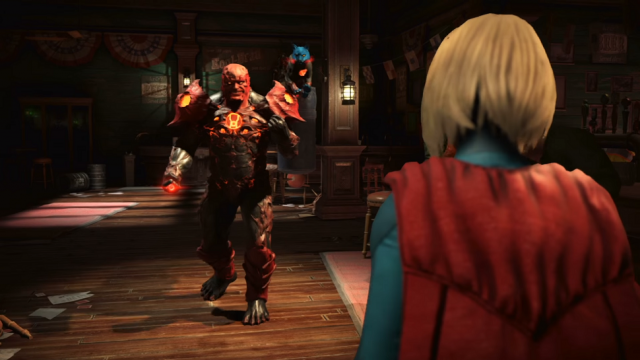
As with the first game, each fighter is impeccably balanced, and all of them have a diverse array of strengths and weaknesses. This includes the many all-new fighter additions in Injustice 2, such as Supergirl, Atrocitus, Poison Ivy, Scarecrow, Captain Cold and Cheetah, as well as returning veterans from the first game such as Superman, Batman, Wonder Woman, The Flash, Green Lantern, Aquaman, The Joker and Harley Quinn, who mostly retain their old movesets, but pack in all-new Super Moves, along with new balance tweaks and special moves. Each fighter has a very precise method of ideal battling throughout their special moves especially, without as much noticeable overlap as some of the fighters from the original Injustice: Gods Among Us. This is primarily because overlapping characters like Shazam, Sinestro and Doomsday are now absent from Injustice 2’s roster, with other overlapping characters such as Power Girl, Reverse-Flash and Vixen now treated as alternate ‘Premier Skins’ that can be earned in-game (or bought), and used as part of character customization for properly playable characters, rather than having a mostly recycled fighter taking up space in the main fighter roster.
Another major new hook in Injustice 2 also comes by way of an RPG-esque loot-based gear system, which allows you to further customize your fighters with not only new looks, but also boosted stats and new capabilities in combat. You can earn loot, in turn ‘decoded’ from Mother Boxes that come in bronze, silver, gold, platinum and diamond varieties, from completing fights across the featured play modes, as well as completing cycling gameplay challenges. The rewards from these Mother Boxes help you craft several potential ‘loadouts’ for your fighters, in a pretty smart fusion between online shooter sensibilities and well-crafted fighter gameplay.
The loot system adds much more strategy to the solo gameplay, and can also enhance both online and local combat against other human players with new layers of complex variables that will keep your skills sharp, and your battles unexpected! Don’t worry if you’d rather not be bothered with all that during online competition especially though. You do have the option of disabling loot benefits and treating loot as merely cosmetic, if you so choose. Certain loot is also restricted until you ‘level up’ compatible fighters through frequent use, though fortunately, you can use an in-game currency to bring other fighters up to speed, if you don’t want to grind with everyone.
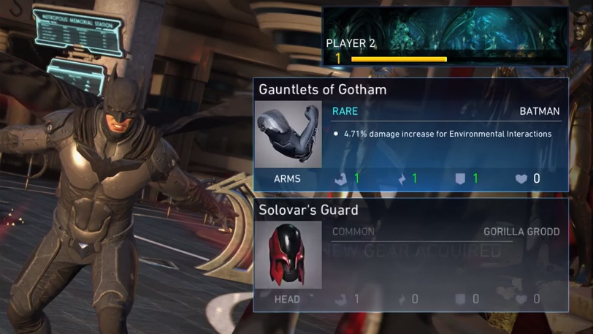
Collecting loot for your fighters can be very enjoyable, and does make for a solid reward for accomplishing challenges, and taking on the specialized ‘Multiverse’ fights, which give you unpredictable opponents and fighting variables akin to Mortal Kombat X’s ‘Living Towers’ mode. This however is where that irritating caveat to an otherwise excellent fighting game comes in; The clear desire to further siphon money out of players through microtransactions and paid premium content.
Injustice 2 will already run you $59.99 USD/$79.99 CAN to purchase up front outside of a sale, and that’s if you merely buy the Standard Edition! The Deluxe Edition, which includes free access to the first three DLC fighters when they release, along with one exclusive gear shader and one Premier Skin, costs $79.99 USD/$99.99 CAN, and if you’re an especially big spender, you can grab the Ultimate Edition of Injustice 2 for $99.99 USD/$129.99 CAN, which essentially includes the game’s Season Pass, giving you access to all nine planned DLC fighters when they release, as well as two gear shaders, and three Premier Skins. If you need to buy that Season Pass (or ‘Ultimate Pack’) separately, that’s another $39.99 USD/$49.99 CAN to get those nine DLC fighters, gear shaders and Premier Skins. Finally, if you didn’t pre-order the game, you’ll be missing Injustice 2’s pre-order incentive fighter, Darkseid, and he will cost you another $4.99 USD/$7.99 CAN if you want to play as him, as will Brainiac if you don’t want to bother completing the Story Mode to unlock him in-game. This is all before the in-game microtransactions!
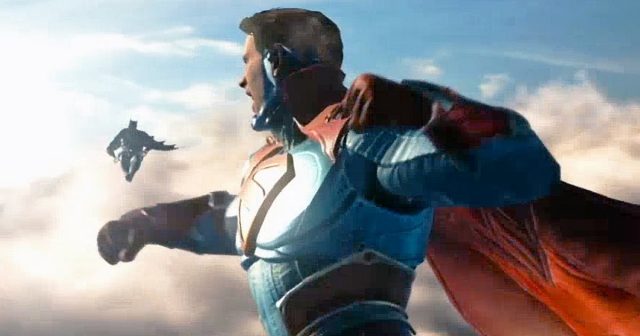
Immediately, Injustice 2 has a fairly aggressive DLC strategy, but that’s even before you’re introduced to Source Crystals. Source Crystals are one of two in-game currencies, alongside credits, which you earn wholly in-game by winning fights and completing challenges. Credits are primarily used to purchase Mother Boxes, which of course net you random loot drops to outfit your fighters with. Source Crystals meanwhile are what you spend to unlock new gear shaders and Premier Skins at your leisure, rather than having to try your luck at earning them in-game. They’re also used to mix and match gear stats with gear appearances by using the ‘Transform Gear’ option. Finally, Source Crystals, as I mentioned, can be used to level up characters to a maxed-out level 20, if you’ve already reached level 20 with at least one other character.
Granted, the microtransactions definitely aren’t pay-to-win, and they are primarily for the sake of reducing grinding time and adding merely cosmetic benefits to your fighters, rather than truly slanting Injustice 2’s gameplay in your favour. That said however, the randomized loot system is very clearly designed in a way to encourage you to buy these Source Crystals, since you can never truly be sure if you’ll get the rewards you actually want for the fighters you actually like to use. The amount of time you’ll need to spend to potentially earn the right rewards can add up very fast, and that’s going to quickly pit your patience against your wallet, if you’re the kind of gamer that loves to line their pockets with in-game goodies. Sure, some Injustice 2 players will be able to resist and/or ignore the microtransactions, but they’re still there, and their shady intentions are still far too noticeable. The cosmetic loot setup didn’t need to be random, and between this game and the previous Mortal Kombat X, Warner Bros. definitely needs to exercise more restraint when it comes to incorporating microtransactions into their otherwise excellent fighting games.
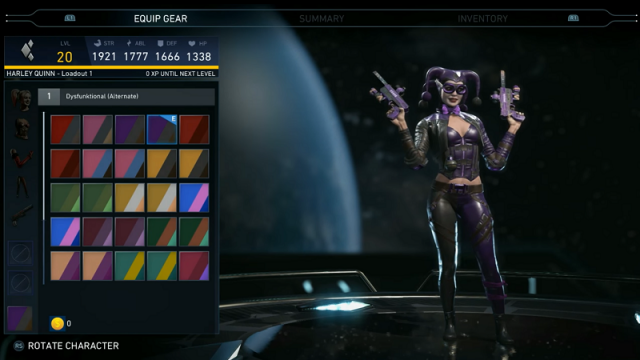
Fortunately, even if its DLC and microtransactions are a bit intrusive at times, Injustice 2 nonetheless remains one of the best modern fighting game experiences that money can buy at this point, being packed with well-crafted, consistently evolving fighting mechanics that never feel like they’re getting old. Both uninitiated casual players and hardcore fighting game enthusiasts, along with everyone in between, will find plenty to enjoy in Injustice 2, since the gameplay is accessible without being dumbed down, and rewarding to master players without ever being overwhelming. Whether you and your friends love fighting games, the DC Universe, or ideally, both, Injustice 2 is going to be stealing many hours on your preferred console for the foreseeable future!
As with its predecessor, and Netherrealm-developed fighting games in general, Injustice 2 contains a sizable Story Mode to go along with its expected options of local and online fights against the CPU or other human players. Said Story Mode unfolds five years after the events of Injustice: Gods Among Us, leaving the tyrannical Superman imprisoned and under guard by Batman’s allies, as they work to rebuild the parallel Earth of the Injustice universe. Even with Superman captured however, Wonder Woman and Black Adam remain at large, and have since discovered another Kryptonian, Superman’s cousin, Supergirl, whom they are training to distrust Batman and the other DC heroes on his side. The mere presence of surviving Kryptonians on Earth however ends up threatening the planet in a different way, when world-collecting villain, Brainiac decides to ‘steal’ Earth’s surviving Kryptonians, while adding Earth to his list of collected worlds and knowledge expanses, forcing Batman to consider freeing Superman so that they can stand against Brainiac together.

It will take you a few hours to play through Injustice 2’s Story Mode, and fortunately, the Story Mode offers you additional opportunities to earn loot, EXP for your player identity and fighters, and credits, along with the ability to unlock Brainiac as a playable fighter without paying real-world money for him, as I mentioned. Injustice 2 also offers a pretty strong and exciting DC Universe-themed storyline to boot, one that doesn’t end up hampered by having to omit fan-favourite characters from the first game such as Lex Luthor and Shazam. There’s a solid amount of twists and turns in Injustice 2’s plot, and you even get the option to choose fighters for certain conflicts this time, while also exploring multiple ending paths for the Story Mode’s conclusion. The replayability is still pretty small, though at least you are rewarded for seeing every outcome, even if it amounts to the same loot and EXP benefits that you could just as easily get in the other game modes.
Injustice 2 continues the DC Universe’s modern hot streak in the triple-A gaming space, providing what’s easily one of the best fighting games you’ll play in 2017, and one that will likely stand as a recurring favourite for the next couple of years at least. Its gameplay is fun and appealing even for people who don’t generally take to fighting games, and it’s packed to the gills with all sorts of variable, evolving challenges and rewards, all of which will keep you coming back to further outfit your arsenal of DC heroes and villains!
As with Netherrealm Studios’ previous Mortal Kombat X, the aggressive DLC and microtransactions are a fairly frequent nuisance on the negative side, especially for those who do savour the idea of diving into the all-new loot system in this sequel, but that’s the worst you can say about an experience that is quite simply sublime in all other respects. You do at least have the option of earning all of your desired cosmetic rewards in-game, if you’re willing to put tons of time into it, but I really wish that Warner Bros. would stop dirtying Netherrealm Studios’ masterful fighting games with paid premium currency and excessive DLC that doesn’t need to be in them.
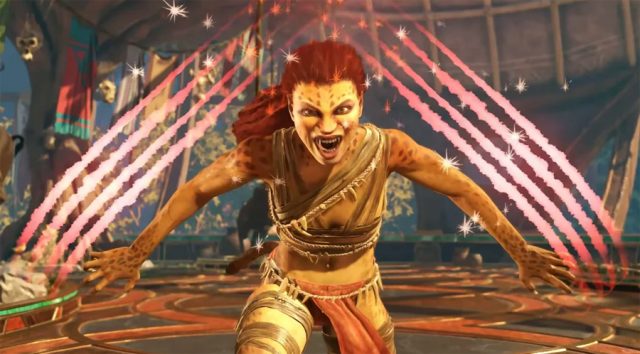
Nonetheless, Injustice 2 stands as the widespread DC Universe’s new gold standard in the triple-A gaming space. Annoying cash grabs aside, this is an excellent fighting game that will keep on giving for the foreseeable future, to the point where even general fighting game enthusiasts that don’t necessarily consider themselves DC fans should nonetheless check this game out. If you love DC as much as you love beating down your opponents in single combat though, then Injustice 2 is some of the most fun you’re going to have out of this genre for quite a while!
This review is based on a PS4 copy of, “Injustice 2”, provided by Warner Bros.

